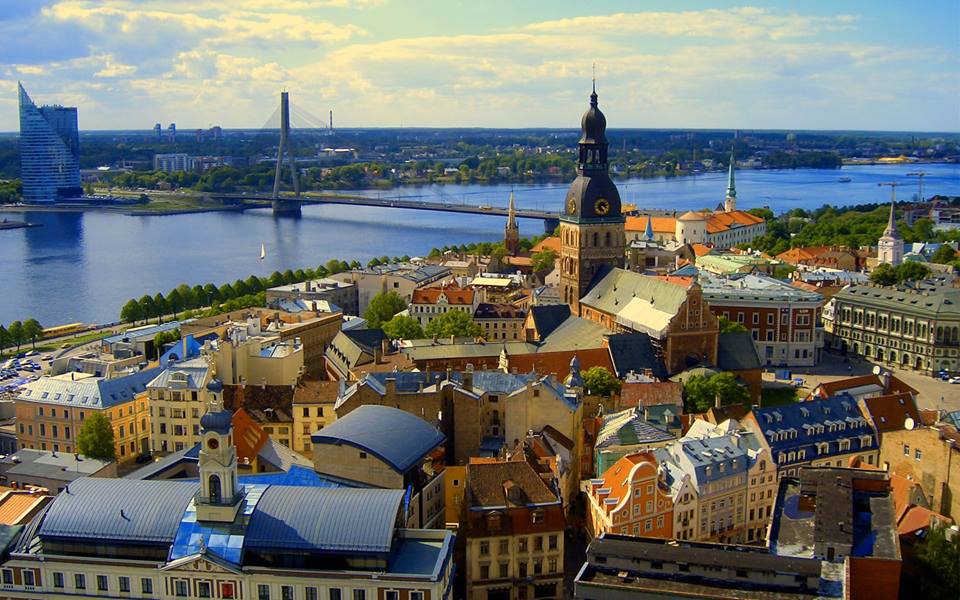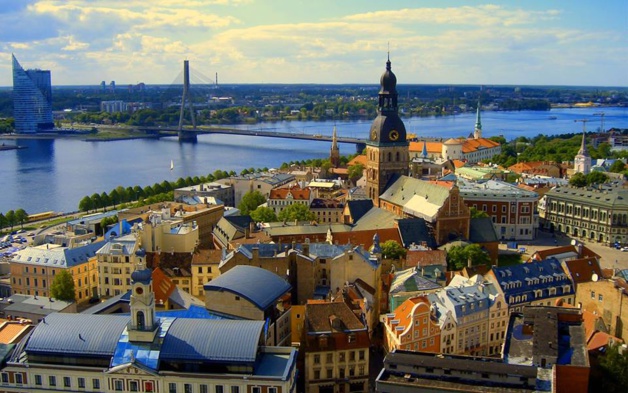The genesis of dainas (which are orally transmitted from generation to generation) is still indeterminate. However, the first dainas were written in the XVIth century, and they already had their final form at the time: the great majority was composed of trochaic or dactylic quatrains written in Latvian. They dealt with various themes ranging from Latvian mythology to daily life. Because of the continuity of the genre through the ages on Latvian territory, (all of that in spite of centuries of occupation and oppression), dainas are the main mode of transmission of Latvian culture and one of the milestones in identity building.
Moreover, shortly before Latvia became independent in 1991, Latvians took advantage of these dainas as a diplomatic weapon during the « Singing Revolution ». Entire crowds sang along those timeless, highly symbolic singings. For these numerous reasons, the form of daina has been registered on UNESCO’s Memories of the World since 2001.
« Kas to teica, tas meloja, Ka saulīte nakti guļ ; Vai saulīte tur uzlēca, Kur vakaru norietēj' ? »
« Whoever said it, lied, that the Sun will set at night; does the Sun rise, or did he set yesterday ? »
« Whoever said it, lied, that the Sun will set at night; does the Sun rise, or did he set yesterday ? »
Why is daina less known than haiku in Japan or than other literary forms in general? The tongue is a first clue in this reflexion. Indeed, only 2,5 millions people speak Latvian in the world (against 127 millions native speakers of Japanese, for example). In France, only Michel Jonval, a former student of the “Ecole normale supérieure”, got on with the job of partially translating those poems. Partially, for it would be surprising that the estimated million and a half dainas would be totally translated one day. Besides, their number is so astronomical that several organizations are still in charge of archiving those dainas today. The writer and folklorist Krišjānis Barons was the first one to collect those texts in the XIXth century. His name is important, for his approach catalysed the era of awakening of the identity and national sentiments in Latvia.
Moreover, Latvian people are probably the only ones who can fully appreciate dainas, which is another possible reason for their low popularity in foreign countries. It is necessary to understand the connection that Latvians maintain with nature, their history and their identity in order to revel in the true substance of these quatrains. Therefore, translations will never account for the precise connotations created by words and sonorities. But in absence of the appreciation of the original text, everyone can find pleasure in the sung form. Then, before making the field jump in Latvia, it is best to keep listening to the songs at home to make one’s own opinion. However, there is a drawback: it is difficult to find albums of Latvian folkloric songs. Nevertheless, the CD of songs selected and sung by Vaira Vīķe-Freiberga*, the former President of Latvian Republic between 1999 and 2007 is a sound investment. The disk, published by the Culture Management Centre « Lauska », presents a wide range of the Latvian musical repertoire.
Therefore, Latvian poetry has a low popularity, but its continuity and its history fully enhance its prestige. Whereas contemporary French poetry neglects alexandrine and defined forms such as sonnet, daina still withstands the test of time. Then, it is unsurprising that those texts written in Latvian – although mostly anonymous – have constituted a true landmark for the populations whose identity was oppressed. Today, at least free and independent, the Latvian people cry out those texts with pride during great gatherings.
As a consequence, daina is not only an ancient traditional song. It is also an important tool for political contestation, a symbol of the Latvian identity (so tangible throughout history) and a literary form that is too often unknown. Let us hope that Riga will take advantage of its status of European Capital of Culture, in order to highlight the culture of the country while becoming integrated into Europe. Indeed, being interested in dainas amounts to be interested in Latvia, in Latvian history and in the singular parts of the European Salad Bowl. From mythology to daily life, the history of the country can be relived through these texts. Finally, each daina is made up of two stories: the one it tells and the one that surrounds it.
« Sen to Rigu daudzinaja, Nu to Rigu ieraudziju, Visapkart smilšu kalni, Parti Rīga udeni. »
« For a long time Rīga has been glorified, finally I saw it, everywhere around the sandy hills, Rīga, even in the water. »
« For a long time Rīga has been glorified, finally I saw it, everywhere around the sandy hills, Rīga, even in the water. »
* http://www.lauska.lv/index.php?page=shop.product_details&flypage=flypage.tpl&product_id=19&category_id=11&option=com_virtuemart&Itemid=53&lang=lv (to get the CD)





























